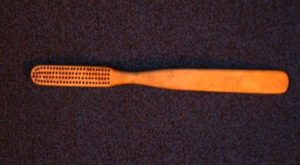Personal Hygiene
By the mid-19th century, cleanliness had become associated with gentility; the Tredwells and their peers bathed regularly, although this did not necessarily mean getting fully wet or washing all parts of the body every day. Clean face and hands, tidy hair, and freshly laundered undergarments helped keep men and women looking, and smelling, clean.
…
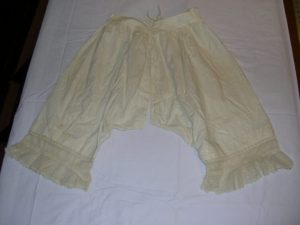 |
 |
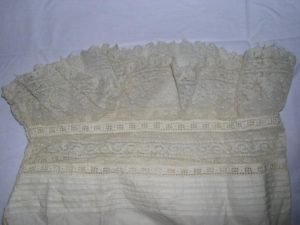 |
|
Drawers |
||
These cotton drawers, embroidered with an S, likely belonged to Sarah Tredwell (1835-1906). Drawers provided a little extra modesty if one’s skirt was momentarily lifted by a breeze or caught up when descending from a carriage. The crotch seam of the drawers was left open to facilitate using a chamber pot or privy. Initially, each leg was a separate piece, attached only at the waistband, leading to the reference of “a pair of drawers.”
…
…
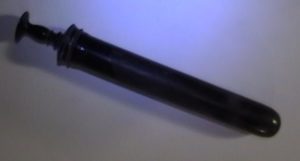 |
… |
Vaginal Syringe
19th century
Metal, rubber
MHM 2002.3229
Syringes like this one were used to irrigate the vagina with water or other solutions to maintain good hygiene and, for married women, to help prevent pregnancy. Women in Europe used vaginal syringes as early as the 17th century, and in America became common by the end of the 19th century. In 2014, archaeologists working at City Hall found a similar syringe to this one in a garbage heap. It dates to 1810.
In 19th century New York, it was common for a woman and her husband to live with her parents for a period of time immediately after their marriage. Seabury and Eliza Tredwell’s two oldest daughters and their husbands, Elizabeth and Effingham Nichols, and Mary and Charles Richards, lived at 29 East Fourth Street after their marriages. Perhaps this syringe was used by one of these couples as a method of birth control.
…
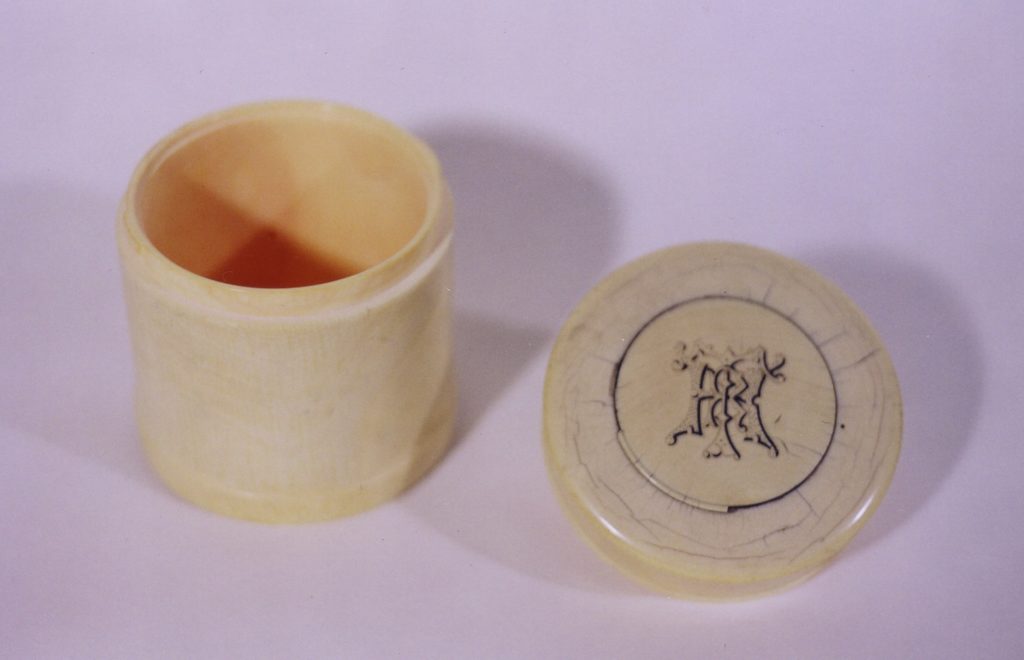 |
… |
Powder Box
1870-1905
Ivory
MHM 2002.3203
Cosmetics were unpopular during the 1830s and 1840s, and women like the Tredwells preferred a natural look. By the 1850s, the use of cosmetics – especially face powders and rouge – became more acceptable. The finest whitening face powders contained “French chalk,” or powdered soapstone.
This powder box, stamped “Tiffany & Co. Union Square” on the bottom, dates to the late-19th century (Tiffany & Co. was located at 15th street, on the west side of Union Square, from 1870 to 1905), and indicates that the Tredwells, like their peers, were more open to the use of cosmetics as the century progressed.
…
..Our Stuff, Ourselves: An Intimate Look at the Tredwells’ Private Lives.. |
||||
.
..Overview... |
..Letter Writing.. |
..Books.. |
..Personal Hygiene.. |
..Dressmaking & Sewing.. |
